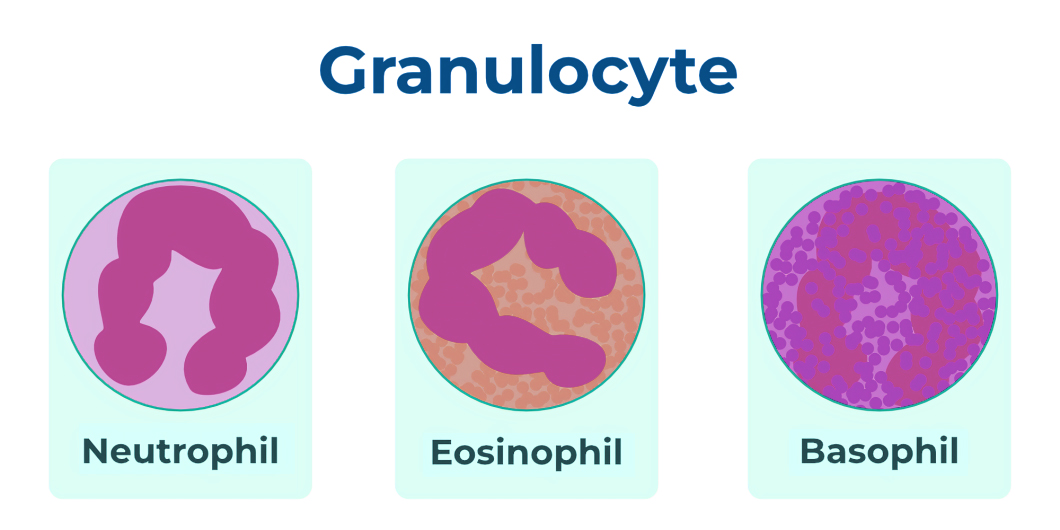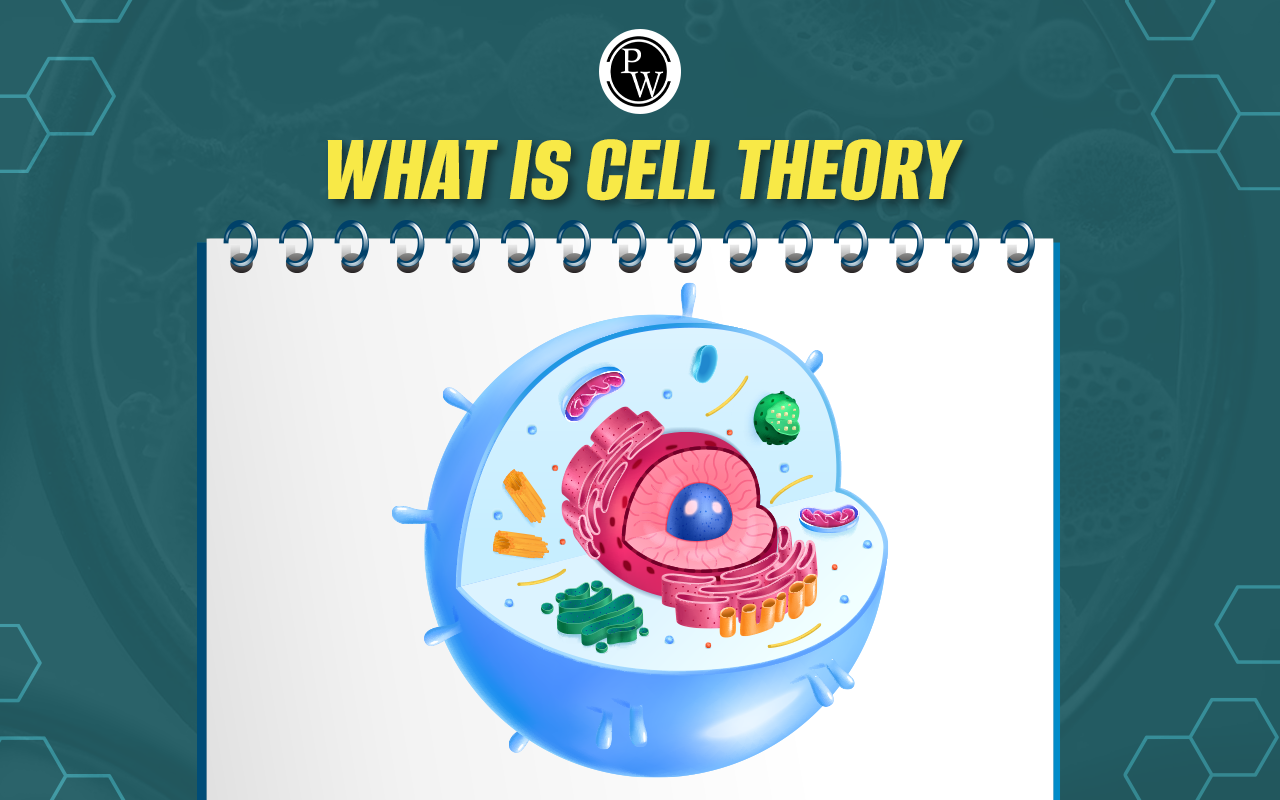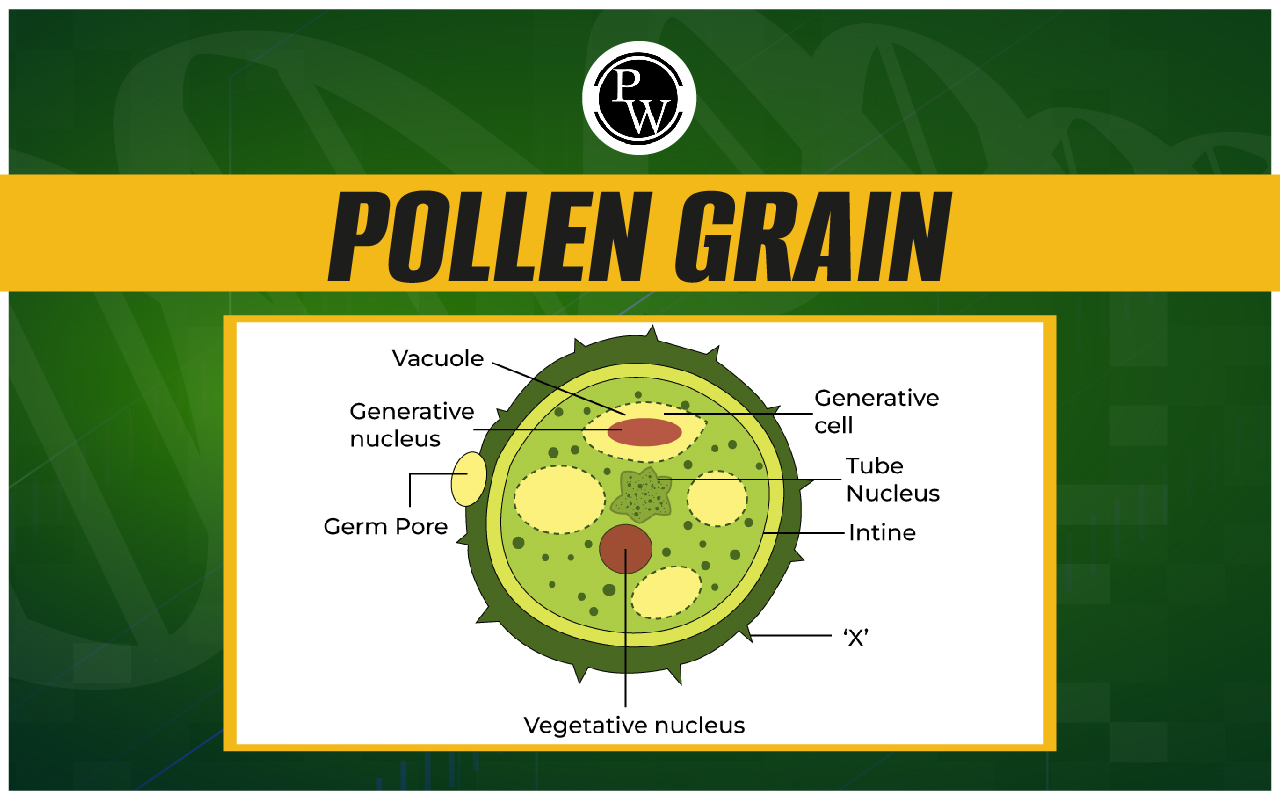
Granulocytes: Granulocytes are the most prevalent type of white blood cell. They have enzyme-filled granules in their cytoplasm, which is a thick, semi-fluid substance inside the cell. When there is an infection or inflammation in the body, granulocytes move quickly to the affected area and release their granules to combat the infection. These cells are also known as granular leukocytes, polymorphonuclear leukocytes, or PMNs. The article below offers detailed NEET Biology Notes on granulocytes, including their types, functions, and other relevant information.
Granulocytes Meaning
Granulocytes are a type of white blood cell that aids the immune system in combating infections. They have distinct features, including large granules in their cytoplasm that can be stained with basic dyes, and a bi-lobed nucleus. Granulocytes play roles in both the innate and adaptive immune responses, helping to fight viral and parasitic infections. In response to infection, granulocytes move to the affected area and release various molecules such as histamine, cytokines, chemokines, enzymes, and growth factors. Consequently, granulocytes are crucial in causing inflammation and play a significant role in the development of allergies.Sexual Reproduction in Flowering Plants
Granulocytes Diagram
The following is a diagram of Granulocytes and their types:
Granulocytes- Site of Development
Granulocytes are formed in the bone marrow, a spongy tissue located in the center of most bones. This tissue generates all types of blood cells, including granulocytes. The process of producing granulocytes is known as granulopoiesis. It starts with hematopoietic stem cells in the bone marrow, which can transform into various types of blood cells, including granulocytes. As they mature, granulocytes develop granules filled with enzymes and other substances that aid in combating infections. Once fully developed, granulocytes are released from the bone marrow into the bloodstream.Structural Organisation in Animals
Granulocytes Types
Granulocytes consist of four distinct types. Except for mast cells, each type can be identified by the color their granules stain when treated with a compound dye. The variations in staining reflect differences in the chemical composition of the granules.Types of granulocytes include:
Eosinophils
Eosinophils play a important role in the body's defense against parasitic infections and allergic diseases. During infections, they release positively charged proteins from their cytoplasmic granules through a process called degranulation. They can also release cytokines, such as IL-10 and IL-4, to help regulate the immune response.Basophils
Basophils are involved in allergic reactions and the body's response to parasites, activated by pathogen-associated molecular patterns (PAMPs) or IgE crosslinking. They are the only circulating white blood cells that contain histamine and can secrete specific cytokines, including IL-4.Neutrophils
Neutrophils are the most common type of white blood cell found in humans, making up 60-65% of the white blood cells in the bloodstream. They play a crucial role in the body's immune response. Neutrophils can be divided into two types: those that kill pathogens and those that trap them. When they receive signals of an infection, neutrophils leave the bloodstream to reach the infection site. They do not return to the bloodstream; instead, they die and become pus cells. Normally, neutrophils stay in the bone marrow until they mature. However, during an infection, immature neutrophils called promyelocytes and myelocytes are released.| Important NEET Biology Notes | ||
|---|---|---|
| Selaginella | Embryo | Malvaceae |
| Pinus | Polyembryony | Volvox |
Mast Cells
Mast cells are involved in allergic and anaphylactic reactions, but they also play a protective role in immunity, particularly against parasites and environmental toxins such as venoms. Similar to basophils, mast cells have FcεRI receptors that bind to the Fc region of IgE immunoglobulins produced in response to allergens and parasitic infections. They also participate in tissue repair and maintenance. Morphology: Mast cells have a nucleus that is obscured by a dense, granular cytoplasm. Abundance: Mast cells are present in low frequencies in tissues. They are long-lived cells that reside in mucosal tissues.| Important NEET Biology Notes | ||
|---|---|---|
| Chara | Funaria | Apomixis |
| Rhizopus | Spirogyra | Bacteriophage |
Granulocytes Function
Granulocytes are a type of white blood cell, also known as leukocytes, that play a key role in the body's immune defense. They are named for the granules in their cytoplasm, which can be stained with specific dyes. The primary functions of granulocytes include:- Phagocytosis: Granulocytes can engulf and destroy foreign particles, such as bacteria and fungi. Neutrophils are the most active granulocytes in phagocytosis.
- Degranulation: Granulocytes contain granules filled with enzymes and other chemicals that can kill pathogens and damage tissues. When a granulocyte encounters a foreign particle, it releases these granules in a process called degranulation. The released chemicals can directly kill pathogens or attract other immune cells to the infection site.
- Inflammation: Granulocytes release chemicals that promote inflammation, helping to contain infections and isolate damaged tissues. Inflammation is a normal immune response, but it can be harmful if uncontrolled.
- Antigen Presentation: Granulocytes can present antigens (foreign molecules) to T cells, aiding in the activation of the immune response. T cells, another type of white blood cell, play a central role in the adaptive immune system. When a granulocyte presents an antigen to a T cell, it activates the T cell to attack the pathogen associated with the antigen.
Granulocyte Conditions and Disorders
Granulocytes are a type of white blood cell crucial for fighting infections in the body.Causes of High Granulocyte Levels (Granulocytosis)
A high granulocyte count can result from various conditions, including:- Infections: Bacterial infections often trigger the production of more granulocytes to combat the invading bacteria.
- Inflammatory Diseases: Conditions like rheumatoid arthritis and psoriasis can lead to increased granulocyte levels.
- Autoimmune Diseases: Diseases such as lupus and inflammatory bowel disease cause the immune system to attack the body's own tissues, resulting in higher granulocyte counts.
- Blood Cell Cancers: Certain cancers, like chronic myeloid leukemia (CML), can cause the bone marrow to produce excessive granulocytes.
- Other Factors: Smoking, stress, and certain medications can also contribute to granulocytosis.
Causes of Low Granulocyte Levels (Granulocytopenia)
A low granulocyte count can be caused by various conditions, including:- Bone Marrow Disorders: Disorders like aplastic anemia and leukemia can damage the bone marrow, leading to decreased granulocyte production.
- Infections: Infections such as HIV and viral hepatitis can impair the bone marrow and lower granulocyte levels.
- Chemotherapy: Cancer treatments like chemotherapy can harm the bone marrow, reducing its ability to produce granulocytes.
- Spleen Issues: An enlarged spleen can trap granulocytes, resulting in lower levels in the bloodstream.
- Vitamin Deficiencies: Lack of vitamin B12 and folic acid can diminish granulocyte production.
- Autoimmune Diseases: Conditions such as lupus can target and destroy granulocytes, leading to lower levels.
Granulocytes and Agranulocytes
Granulocytes and agranulocytes are two primary types of white blood cells crucial for the body's immune system. Granulocytes contain granules in their cytoplasm and are categorized into three types:- Neutrophils: These are the most abundant and work by engulfing and destroying bacteria and fungi.
- Eosinophils: They combat parasitic infections and are involved in allergic reactions.
- Basophils: These participate in inflammatory responses and release substances like histamine and heparin.
- Lymphocytes:
- B cells: Produce antibodies.
- T cells: Include helper, cytotoxic, and regulatory T cells.
- Natural Killer (NK) cells: Target and destroy virally infected and tumor cells.
- Monocytes: These are the largest white blood cells; in tissues, they transform into macrophages and dendritic cells. These cells engulf pathogens and present their antigens to T cells.
| NEET Exam Important Links | |
|---|---|
| NEET Biology Syllabus | NEET Biology Diagrams |
| NEET Biology MCQ | NEET Biology Chapter wise Weightage |
| NEET Biology Notes | NEET Previous Year Question papers |
Granulocytes FAQs
Q 1. What are granulocytes and their functions?
Ans. Granulocytes are a type of white blood cell that contain small granules filled with proteins. They include neutrophils, eosinophils, and basophils. Neutrophils, in particular, play a key role in fighting bacterial infections.
Q 2. What are granulocytes and agranulocytes?
Ans. Blood contains two main types of white blood cells: granulocytes and agranulocytes. Granulocytes include basophils, neutrophils, and eosinophils, while agranulocytes include lymphocytes and monocytes. Monocytes act as phagocytes, engulfing and destroying foreign pathogens.
Q 3. Why are WBC called granulocytes?
Ans. Granulocytes are the most common type of white blood cell. They are characterized by enzyme-filled granules in their cytoplasm. When the body detects infection or inflammation, granulocytes migrate to the affected area and release these granules to combat the infection.
Q 4. What is an example of a granulocyte?
Ans. Granulocytes are immune cells that contain granules filled with enzymes used during infections, allergic reactions, and conditions like asthma. Examples include neutrophils, eosinophils, and basophils.
Q 5. What is the function of agranulocytes?
Ans. Agranulocytes are a type of white blood cell crucial for immunity. They play roles in defending against infections and cancerous cells, as well as in removing old and dysfunctional cells from the body. Examples include lymphocytes and monocytes.
🔥 Trending Blogs
Talk to a counsellorHave doubts? Our support team will be happy to assist you!

Check out these Related Articles
Free Learning Resources
PW Books
Notes (Class 10-12)
PW Study Materials
Notes (Class 6-9)
Ncert Solutions
Govt Exams
Class 6th to 12th Online Courses
Govt Job Exams Courses
UPSC Coaching
Defence Exam Coaching
Gate Exam Coaching
Other Exams
Know about Physics Wallah
Physics Wallah is an Indian edtech platform that provides accessible & comprehensive learning experiences to students from Class 6th to postgraduate level. We also provide extensive NCERT solutions, sample paper, NEET, JEE Mains, BITSAT previous year papers & more such resources to students. Physics Wallah also caters to over 3.5 million registered students and over 78 lakh+ Youtube subscribers with 4.8 rating on its app.
We Stand Out because
We provide students with intensive courses with India’s qualified & experienced faculties & mentors. PW strives to make the learning experience comprehensive and accessible for students of all sections of society. We believe in empowering every single student who couldn't dream of a good career in engineering and medical field earlier.
Our Key Focus Areas
Physics Wallah's main focus is to make the learning experience as economical as possible for all students. With our affordable courses like Lakshya, Udaan and Arjuna and many others, we have been able to provide a platform for lakhs of aspirants. From providing Chemistry, Maths, Physics formula to giving e-books of eminent authors like RD Sharma, RS Aggarwal and Lakhmir Singh, PW focuses on every single student's need for preparation.
What Makes Us Different
Physics Wallah strives to develop a comprehensive pedagogical structure for students, where they get a state-of-the-art learning experience with study material and resources. Apart from catering students preparing for JEE Mains and NEET, PW also provides study material for each state board like Uttar Pradesh, Bihar, and others
Copyright © 2025 Physicswallah Limited All rights reserved.
Get App









